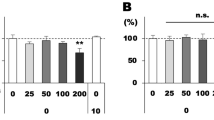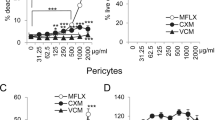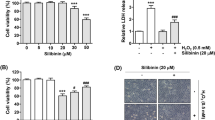Abstract
Bacterial endophthalmitis is a severe complication of eye surgeries that can lead to vision loss. Current treatment involves intravitreal antibiotic injections that control bacterial growth but not inflammation. To identify newer therapeutic targets to promote inflammation resolution in endophthalmitis, we recently employed an untargeted metabolomics approach. This led to the discovery that the levels of S-nitroso-l-glutathione (GSNO) were significantly reduced in an experimental murine Staphylococcus aureus (SA) endophthalmitis model. In this study, we tested the hypothesis whether GSNO supplementation via different routes (oral, intravitreal) provides protection during bacterial endophthalmitis. Our results show that prophylactic administration of GSNO via intravitreal injections ameliorated SA endophthalmitis. Therapeutically, oral administration of GSNO was found to be most effective in reducing intraocular inflammation and bacterial burden. Moreover, oral GSNO treatment synergized with intravitreal antibiotic injections in reducing the severity of endophthalmitis. Furthermore, in vitro experiments using cultured human retinal Muller glia and retinal pigment epithelial (RPE) cells showed that GSNO treatment reduced SA-induced inflammatory mediators and cell death. Notably, both in-vivo and ex-vivo data showed that GSNO strengthened the outer blood-retinal barrier during endophthalmitis. Collectively, our study demonstrates GSNO as a potential therapeutic agent for the treatment of intraocular infections due to its dual anti-inflammatory and cytoprotective properties.
Graphical abstract









Similar content being viewed by others
Data availability
The data generated during the current study are available from the corresponding author upon reasonable request.
Code availability
Not applicable.
References
Callegan MC et al (2002) Bacterial endophthalmitis: epidemiology, therapeutics, and bacterium–host interactions. Clin Microbiol Rev 15(1):111–124
Flaxman SR et al (2017) Global causes of blindness and distance vision impairment 1990–2020: a systematic review and meta-analysis. Lancet Glob Health 5(12):e1221–e1234
Das S et al (2022) Innate immunity dysregulation in aging eye and therapeutic interventions. Ageing Res Rev 82:101768
Schwartz SG, Flynn HW Jr (2014) Update on the prevention and treatment of endophthalmitis. Expert Rev Ophthalmol 9(5):425–430
Dave VP et al (2014) Endophthalmitis following pars plana vitrectomy: a literature review of incidence, causative organisms, and treatment outcomes. Clin Ophthalmol 8:2183–2188
Grzybowski A et al (2020) The role of systemic antimicrobials in the treatment of endophthalmitis: a review and an international perspective. Ophthalmol Ther 9(3):485–498
Bui DK, Carvounis PE (2014) Evidence for and against intravitreous corticosteroids in addition to intravitreous antibiotics for acute endophthalmitis. Int Ophthalmol Clin 54(2):215–224
van Langevelde P et al (1998) Antibiotic-induced lipopolysaccharide (LPS) release from Salmonella typhi: delay between killing by ceftazidime and imipenem and release of LPS. Antimicrob Agents Chemother 42(4):739–743
van Langevelde P et al (1998) Antibiotic-induced release of lipoteichoic acid and peptidoglycan from Staphylococcus aureus: quantitative measurements and biological reactivities. Antimicrob Agents Chemother 42(12):3073–3078
Kumar A, Kumar A (2015) Role of Staphylococcus aureus virulence factors in inducing inflammation and vascular permeability in a mouse model of bacterial endophthalmitis. PLoS ONE 10(6):e0128423
Heumann D et al (1994) Gram-positive cell walls stimulate synthesis of tumor necrosis factor alpha and interleukin-6 by human monocytes. Infect Immun 62(7):2715–2721
Callegan MC et al (1999) Pathogenesis of gram-positive bacterial endophthalmitis. Infect Immun 67(7):3348–3356
Astley RA et al (2016) Modeling intraocular bacterial infections. Prog Retin Eye Res 54:30–48
Patel SN et al (2020) Prophylaxis measures for postinjection endophthalmitis. Surv Ophthalmol 65(4):408–420
Miller FC et al (2019) Targets of immunomodulation in bacterial endophthalmitis. Prog Retin Eye Res 73:100763
Rajamani D et al (2016) Temporal retinal transcriptome and systems biology analysis identifies key pathways and hub genes in Staphylococcus aureus endophthalmitis. Sci Rep 6:21502
Graham SF et al (2016) Metabolic signatures of Huntington’s disease (HD): (1)H NMR analysis of the polar metabolome in post-mortem human brain. Biochim Biophys Acta 1862(9):1675–1684
Kumar A, Giri S, Kumar A (2016) 5-aminoimidazole-4-carboxamide ribonucleoside-mediated adenosine monophosphate-activated protein kinase activation induces protective innate responses in bacterial endophthalmitis. Cell Microbiol 18(12):1815–1830
Garcia G Jr et al (2020) Hippo signaling pathway has a critical role in Zika virus replication and in the pathogenesis of neuroinflammation. Am J Pathol 190(4):844–861
Francis R et al (2020) Glycolytic inhibitor 2-deoxyglucose suppresses inflammatory response in innate immune cells and experimental staphylococcal endophthalmitis. Exp Eye Res 197:108079
Singh S et al (2021) Integrative metabolomics and transcriptomics identifies itaconate as an adjunct therapy to treat ocular bacterial infection. Cell Rep Med 2(5):100277
Jarrell ZR et al (2022) Low-dose cadmium potentiates metabolic reprogramming following early-life respiratory syncytial virus infection. Toxicol Sci 188(1):62–74
Patil CD et al (2022) Postinfection metabolic reprogramming of the murine trigeminal ganglion limits herpes simplex virus-1 replication. MBio 13(5):e0219422
Globisch D et al (2013) Onchocerca volvulus-neurotransmitter tyramine is a biomarker for river blindness. Proc Natl Acad Sci USA 110(11):4218–4223
Broniowska KA, Diers AR, Hogg N (2013) S-nitrosoglutathione. Biochim Biophys Acta 1830(5):3173–3181
Begara-Morales JC et al (2018) Nitric oxide buffering and conditional nitric oxide release in stress response. J Exp Bot 69(14):3425–3438
Bogdan C (2015) Nitric oxide synthase in innate and adaptive immunity: an update. Trends Immunol 36(3):161–178
Andrew PJ, Mayer B (1999) Enzymatic function of nitric oxide synthases. Cardiovasc Res 43(3):521–531
Rosales MA et al (2014) S-nitrosoglutathione inhibits inducible nitric oxide synthase upregulation by redox posttranslational modification in experimental diabetic retinopathy. Invest Ophthalmol Vis Sci 55(5):2921–2932
Choi M et al (2020) Chitosan-based nitric oxide-releasing dressing for anti-biofilm and in vivo healing activities in MRSA biofilm-infected wounds. Int J Biol Macromol 142:680–692
Liu Z et al (1998) S-transnitrosation reactions are involved in the metabolic fate and biological actions of nitric oxide. J Pharmacol Exp Ther 284(2):526–534
Hogg N (2000) Biological chemistry and clinical potential of S-nitrosothiols. Free Radic Biol Med 28(10):1478–1486
Hlaing SP et al (2018) S-nitrosoglutathione loaded poly(lactic-co-glycolic acid) microparticles for prolonged nitric oxide release and enhanced healing of methicillin-resistant Staphylococcus aureus-infected wounds. Eur J Pharm Biopharm 132:94–102
de Oliveira CP et al (2008) Prevention and reversion of nonalcoholic steatohepatitis in OB/OB mice by S-nitroso-N-acetylcysteine treatment. J Am Coll Nutr 27(2):299–305
Barnett SD, Buxton ILO (2017) The role of S-nitrosoglutathione reductase (GSNOR) in human disease and therapy. Crit Rev Biochem Mol Biol 52(3):340–354
de Souza GF et al (2006) Leishmanicidal activity of primary S-nitrosothiols against Leishmania major and Leishmania amazonensis: implications for the treatment of cutaneous leishmaniasis. Nitric Oxide 15(3):209–216
Liu C et al (2017) Nitric oxide-generating compound GSNO suppresses porcine circovirus type 2 infection in vitro and in vivo. BMC Vet Res 13(1):59
Prasad R et al (2007) GSNO attenuates EAE disease by S-nitrosylation-mediated modulation of endothelial–monocyte interactions. Glia 55(1):65–77
Khan M et al (2005) S-nitrosoglutathione reduces inflammation and protects brain against focal cerebral ischemia in a rat model of experimental stroke. J Cereb Blood Flow Metab 25(2):177–192
Haq E et al (2007) S-nitrosoglutathione prevents interphotoreceptor retinoid-binding protein (IRBP(161–180))-induced experimental autoimmune uveitis. J Ocul Pharmacol Ther 23(3):221–231
Guest JM et al (2018) Isavuconazole for treatment of experimental fungal endophthalmitis caused by Aspergillus fumigatus. Antimicrob Agents Chemother 62(11):e01537–18
Peter B et al (2013) ESCRS guidelines for prevention and treatment of endophthalmitis following cataract surgery: data, dilemmas and conclusions. Co Dublin, Ireland: The European Society for Cataract & Refractive Surgeons
Sadiq MA et al (2015) Endogenous endophthalmitis: diagnosis, management, and prognosis. J Ophthalmic Inflamm Infect 5(1):32
Chakravortty D, Hensel M (2003) Inducible nitric oxide synthase and control of intracellular bacterial pathogens. Microbes Infect 5(7):621–627
Kumar A et al (2013) Muller glia in retinal innate immunity: a perspective on their roles in endophthalmitis. Crit Rev Immunol 33(2):119–135
Kumar A, Shamsuddin N (2012) Retinal Muller glia initiate innate response to infectious stimuli via toll-like receptor signaling. PLoS ONE 7(1):e29830
Shamsuddin N, Blair J, Kumar A (2011) Toll like receptor 2 mediates the innate immune response of retinal Muller glia to Staphylococcus aureus. Invest Ophthalmol Vis Sci 52(14):2959–2959
Das S et al (2022) Transcriptomics and systems biology identify non-antibiotic drugs for the treatment of ocular bacterial infection. iScience 25(9):104862
Singh PK, Kumar A (2016) Mitochondria mediates caspase-dependent and independent retinal cell death in Staphylococcus aureus endophthalmitis. Cell Death Discov 2(1):16034
Coburn PS et al (2015) Blood-retinal barrier compromise and endogenous Staphylococcus aureus endophthalmitis. Invest Ophthalmol Vis Sci 56(12):7303–7311
Singh S, Singh S, Kumar A (2022) Systemic Candida albicans infection in mice causes endogenous endophthalmitis via breaching the outer blood-retinal barrier. Microbiol Spectr 10(4):e0165822
Coburn PS et al (2016) Bloodstream-to-eye infections are facilitated by outer blood-retinal barrier dysfunction. PLoS ONE 11(5):e0154560
Durand ML (2017) Bacterial and fungal endophthalmitis. Clin Microbiol Rev 30(3):597–613
Brockhaus L et al (2019) Revisiting systemic treatment of bacterial endophthalmitis: a review of intravitreal penetration of systemic antibiotics. Clin Microbiol Infect 25(11):1364–1369
Hariprasad SM et al (2006) Vitreous and aqueous penetration of orally administered moxifloxacin in humans. Arch Ophthalmol 124(2):178–182
Etminan M et al (2012) Oral fluoroquinolones and the risk of retinal detachment. JAMA 307(13):1414–1419
Wu XN et al (2022) Emerging antibiotic resistance patterns affect visual outcome treating acute endophthalmitis. Antibiotics (Basel) 11(7):843
Zegans ME et al (2002) The role of bacterial biofilms in ocular infections. DNA Cell Biol 21(5–6):415–420
Qian H et al (2022) Roles and current applications of S-nitrosoglutathione in anti-infective biomaterials. Mater Today Bio 16:100419
Smith A et al (2001) Fluoroquinolones: place in ocular therapy. Drugs 61(6):747–761
Ahmed S et al (2014) Intraocular penetration of systemic antibiotics in eyes with penetrating ocular injury. J Ocul Pharmacol Ther 30(10):823–830
Garcia-Saenz MC et al (2001) Human aqueous humor levels of oral ciprofloxacin, levofloxacin, and moxifloxacin. J Cataract Refract Surg 27(12):1969–1974
Alfaro DV, Liggett PE (1994) Intravenous cefazolin in penetrating eye injuries. I. Effects of trauma and multiple doses on intraocular delivery. Graefes Arch Clin Exp Ophthalmol 232(4):238–241
Birnbaum FA, Gupta G (2016) The role of early vitrectomy in the treatment of fungal endogenous endophthalmitis. Retin Cases Brief Rep 10(3):232–235
Ghosh S, Karin M (2002) Missing pieces in the NF-kappaB puzzle. Cell 109(Suppl):S81-96
Okazaki T et al (2003) Phosphorylation of serine 276 is essential for p65 NF-kappaB subunit-dependent cellular responses. Biochem Biophys Res Commun 300(4):807–812
Kumar A et al (2022) Essential role of NLRP3 inflammasome in mediating IL-1β production and the pathobiology of Staphylococcus aureus endophthalmitis. Infect Immun 90(5):e0010322
Kelley N et al (2019) The NLRP3 inflammasome: an overview of mechanisms of activation and regulation. Int J Mol Sci 20(13):3328
Griffith OW, Stuehr DJ (1995) Nitric oxide synthases: properties and catalytic mechanism. Annu Rev Physiol 57:707–736
Moncada S, Bolanos JP (2006) Nitric oxide, cell bioenergetics and neurodegeneration. J Neurochem 97(6):1676–1689
Goureau O, Regnier-Ricard F, Courtois Y (1999) Requirement for nitric oxide in retinal neuronal cell death induced by activated Muller glial cells. J Neurochem 72(6):2506–2515
Schneemann A et al (2003) Elevation of nitric oxide production in human trabecular meshwork by increased pressure. Graefes Arch Clin Exp Ophthalmol 241(4):321–326
Jeong H et al (2020) Sustained nitric oxide-providing small molecule and precise release behavior study for glaucoma treatment. Mol Pharm 17(2):656–665
Kim JJ, Kim YH, Lee MY (2009) Proteomic characterization of differentially expressed proteins associated with no stress in retinal ganglion cells. BMB Rep 42(7):456–461
Moyer AL et al (2009) Bacillus cereus-induced permeability of the blood-ocular barrier during experimental endophthalmitis. Invest Ophthalmol Vis Sci 50(8):3783–3793
Obert E et al (2017) Targeting the tight junction protein, zonula occludens-1, with the connexin43 mimetic peptide, alphaCT1, reduces VEGF-dependent RPE pathophysiology. J Mol Med (Berl) 95(5):535–552
Khan M et al (2012) The inhibitory effect of S-nitrosoglutathione on blood-brain barrier disruption and peroxynitrite formation in a rat model of experimental stroke. J Neurochem 123(Suppl 2):86–97
Khan M et al (2011) S-nitrosoglutathione reduces oxidative injury and promotes mechanisms of neurorepair following traumatic brain injury in rats. J Neuroinflamm 8:78
Ray KJ et al (2014) Early addition of topical corticosteroids in the treatment of bacterial keratitis. JAMA Ophthalmol 132(6):737–741
Cohen EJ (2009) The case against the use of steroids in the treatment of bacterial keratitis. Arch Ophthalmol 127(1):103–104
Ming H et al (2023) A mini review of S-Nitrosoglutathione loaded nano/micro-formulation strategies. Nanomaterials (Basel) 13(2):224
Novick R (1967) Properties of a cryptic high-frequency transducing phage in Staphylococcus aureus. Virology 33(1):155–166
Singh PK et al (2020) Aging, but not sex and genetic diversity, impacts the pathobiology of bacterial endophthalmitis. Invest Ophthalmol Vis Sci 61(14):5
Paigen B et al (1985) Variation in susceptibility to atherosclerosis among inbred strains of mice. Atherosclerosis 57(1):65–73
Kumar A et al (2010) Toll-like receptor 2 ligand-induced protection against bacterial endophthalmitis. J Infect Dis 201(2):255–263
Talreja D et al (2014) Pathogenicity of ocular isolates of Acinetobacter baumannii in a mouse model of bacterial endophthalmitis. Invest Ophthalmol Vis Sci 55(4):2392–2402
Singh S et al (2021) Povidone-Iodine attenuates viral replication in ocular cells: implications for ocular transmission of RNA viruses. Biomolecules 11(5):753
Das S, Singh S, Kumar A (2021) Bacterial burden declines but neutrophil infiltration and ocular tissue damage persist in experimental Staphylococcus epidermidis endophthalmitis. Front Cell Infect Microbiol 11:780648
Singh S, Singh PK, Kumar A (2023) Butyrate ameliorates intraocular bacterial infection by promoting autophagy and attenuating the inflammatory response. Infect Immun 91(1):e00252-e322
Singh S et al (2018) Dengue virus or NS1 protein induces trans-endothelial cell permeability associated with VE-Cadherin and RhoA phosphorylation in HMEC-1 cells preventable by Angiopoietin-1. J Gen Virol 99(12):1658–1670
Kerur N et al (2013) TLR-independent and P2X7-dependent signaling mediate Alu RNA-induced NLRP3 inflammasome activation in geographic atrophy. Invest Ophthalmol Vis Sci 54(12):7395–7401
Das S et al (2018) Identification of a novel gene in ROD9 island of Salmonella enteritidis involved in the alteration of virulence-associated genes expression. Virulence 9(1):348–362
Sun J et al (2003) Measurement of nitric oxide production in biological systems by using Griess reaction assay. Sensors 3(8):276–284
Funding
This study was supported by National Institute of Health (NIH) Grants R01 EY027381, R01EY026964, and R21AI135583 awarded to AK. We would like to acknowledge the Research to Prevent Blindness (RPB) for their unrestricted grant to the Kresge Eye Institute/Department of Ophthalmology, Visual, and Anatomical Sciences. The immunology core is supported by an NEI vision center grant P30EY004068. The funders had no role in the design of the study, data collection, data analysis, interpretation of the results, or in the decision to submit the work for publication.
Author information
Authors and Affiliations
Contributions
AK conceived the idea, provided direction and funding for the project, and finalized the manuscript. SD designed and performed the experiments, analyzed the data, prepared manuscript, and figures, and revised the final manuscript. ZA, SS and SS helped with few experiments and edited the manuscript. RW performed sectioning and imaging and edited the manuscript. SG helped in conceptualization of the idea, provided critical feedback in experimental design, and edited the final manuscript.
Corresponding author
Ethics declarations
Conflict of interest
The authors declare no conflict of interest. The authors have no relevant financial or non-financial interests to disclose.
Additional information
Publisher's Note
Springer Nature remains neutral with regard to jurisdictional claims in published maps and institutional affiliations.
Supplementary Information
Below is the link to the electronic supplementary material.
Supplementary file1 (MP4 79 KB)
Supplementary file2 (MP4 91 KB)
Supplementary file3 (MP4 138 KB)
Rights and permissions
Springer Nature or its licensor (e.g. a society or other partner) holds exclusive rights to this article under a publishing agreement with the author(s) or other rightsholder(s); author self-archiving of the accepted manuscript version of this article is solely governed by the terms of such publishing agreement and applicable law.
About this article
Cite this article
Das, S., Ahmad, Z., Singh, S. et al. Oral administration of S-nitroso-l-glutathione (GSNO) provides anti-inflammatory and cytoprotective effects during ocular bacterial infections. Cell. Mol. Life Sci. 80, 309 (2023). https://doi.org/10.1007/s00018-023-04963-w
Received:
Revised:
Accepted:
Published:
DOI: https://doi.org/10.1007/s00018-023-04963-w




